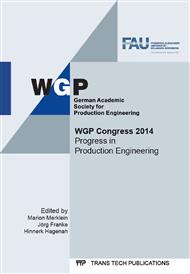p.469
p.477
p.485
p.493
p.501
p.509
p.517
p.525
p.533
Energy KPI’s, Challenges for Sustainable Manufacturing Strategies, Analysis of Existing Rules and Indicators in an Industrial Environment in Relation to the Establishment of Energy Benchmark
Abstract:
As this paper demonstrates, benchmarking is a powerful concept for increasing a company's success. It visualizes the differences in performance through internal or external indicators and is applied in almost all corporate divisions successfully. An important part of the benchmarking process is the selection of indicators that allow for a significant comparison. The requirements linked to the indicators are derived from the objectives of the specific benchmarking project. The use of benchmarking with respect to energy efficiency in product manufacturing promises a transparent presentation of performance differences and the possibility to derive optimization potentials - provided that appropriate energy figures can be found. The future challenge is to develop a system with standardized billing and key energy indicators that enable a cross-comparison of the energy efficiency in the production. This project is described in the research project E|Benchmark, part of the research network Green Factory Bavaria and funded by the Bavarian State Ministry for Science, Education and Arts.
Info:
Periodical:
Pages:
501-508
Citation:
Online since:
September 2014
Authors:
Keywords:
Price:
Сopyright:
© 2014 Trans Tech Publications Ltd. All Rights Reserved
Share:
Citation:


